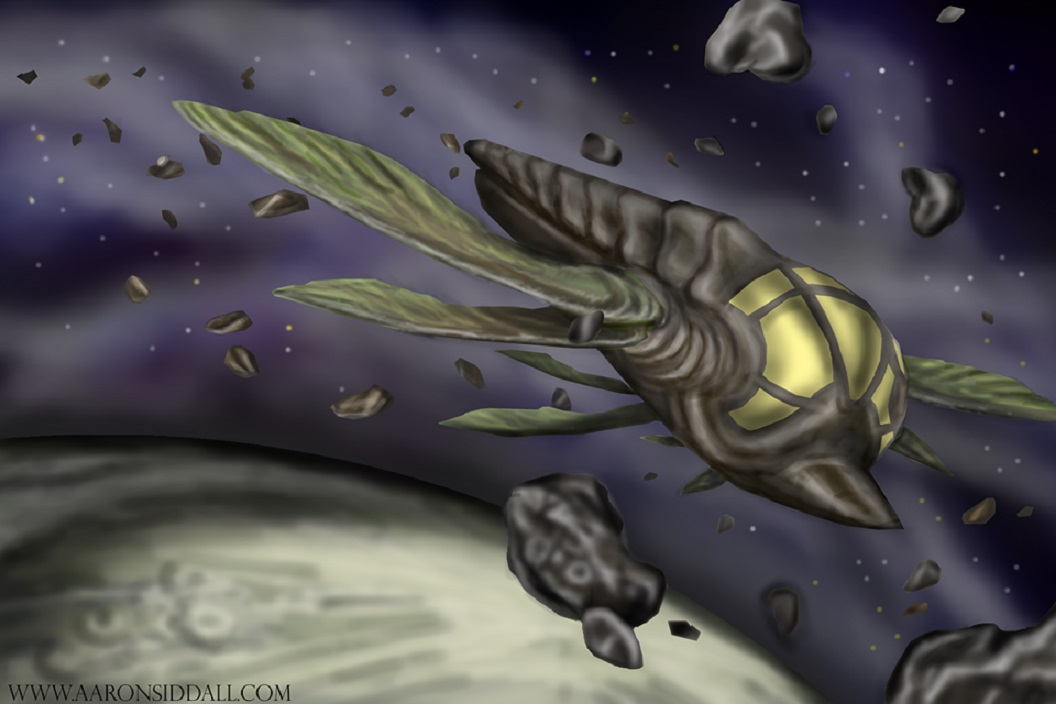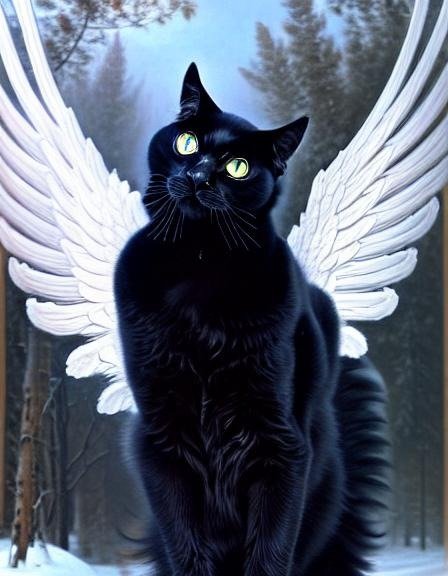Winged Cat
Oh, winged cats! They're so cuuuuuuute!
I don't know what lunatic wizard created these things, but they're a gods-be-damned menace! Some fool brought one aboard as a pet, if you can believe it. Said it would be good to keep the rats down. It did that, all right; along with all the star-fish, the budgies, and the sails which it ripped to shreds. Never again!No one is sure where winged cats originated from. The scuttlebutt says that some wizard was simply having way too much fun and things got out of hand. Religious scholars say they were touched by the celestial powers -- but no one who has encountered them believes that. Gnome naturalists say, however, that they originated from a colony of domestic cats that were shipwrecked on a small world where birds were plentiful, but all the small ground mammals had died from a plague, and they developed wings to better catch and eat the birds. Whatever the case, winged cats are essentially just domestic cats with feathery, birdlike wings. The problem comes in the fact that these often mischievous tiny predators now have the ability to fly. As individual pets, they can be cute and affectionate, and are popular among flying sapient species and ethnicities, such as the Sylphs. In feral colonies, they can be disastrous in a port, causing havoc and destroying valuable fish cargoes.
Basic Information
Anatomy
The winged cat is similar in anatomy to other feline species: it has a strong flexible body, quick reflexes, sharp teeth, and retractable claws adapted to killing small prey. It is covered in fur in a variety of possible colours and patterns on most of its body. Its wings sprout from near its shoulders and are proportionate to its size, with the shape and structure of raptor wings, designed for taking advantage of updrafts to hover, and allowing it to dive quickly upon smaller prey. Wings also come in a variety of plumage shades, though the most common are shades of brown and black; however, some breeds have been introduced to make white and coloured, parrot-like feathers more common. Some winged cats even have feathers at the tips of their long, feline tails, believed to help make gliding easier.
The winged cat averages about 46 cm (18 in) in head-to-body length and 23–25 cm (9–10 in) in height, with about 30 cm (12 in) long tails. Males are typically larger than females. Adult winged cats typically weigh between 4 and 5 kg (9 and 11 lb).
Genetics and Reproduction
Female winged cats can have kittens from spring to late autumn, with litter sizes often ranging from two to five kittens. On ships and other environments where the seasons are less defined, they may reproduce at any time. Despite having avian wings, female winged cats produce their young in live births, not eggs.
Dietary Needs and Habits
Although the winged cat is a social species, it is a solitary hunter. It is carnivorous and is aggressive in its hunting habits. Sometimes, winged cats will kill prey simply for fun.
Additional Information
Perception and Sensory Capabilities
The winged cat's hearing and sense of smell are well developed. It can hear sounds too faint or too high in frequency for human ears, such as those made by mice and other small mammals. It also secretes and perceives pheromones.
Winged cats are a crepuscular predator. They have excellent night vision and can see at only one-sixth the light level required for human vision. This is partly the result of cat eyes having a retro-reflective membrane behind the retina, which reflects any light that passes through the retina back into the eye, thereby increasing the eye's sensitivity to dim light. Large pupils are an adaptation to dim light. The domestic cat has slit pupils, which allow it to focus bright light without chromatic aberration. In low light, a cat's pupils expand to cover most of the exposed surface of its eyes.
Cat communication includes vocalizations like meowing, purring, trilling, hissing, growling, and grunting as well as cat-specific body language. Meowing appears to be a vocalization that has been specifically developed to communicate with sapient species.
Don't forget that you can click on the blue compass on the left to access the Table of Contents at any time!

Want to read all of the Toy Soldier Saga fiction, even before the rest of the world does?Subscribe now!
Scientific Name
Felis catus alatus
Conservation Status
Winged cats are somewhat rare, but are becoming more common.
Geographic Distribution
Related Ethnicities






I am currently imagining the chaos my two kitties having wings would bring. XD I love the speculation on how they came to be.